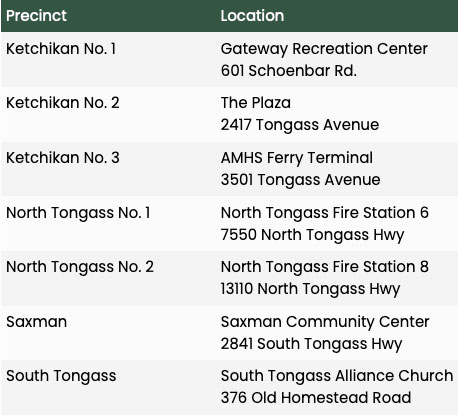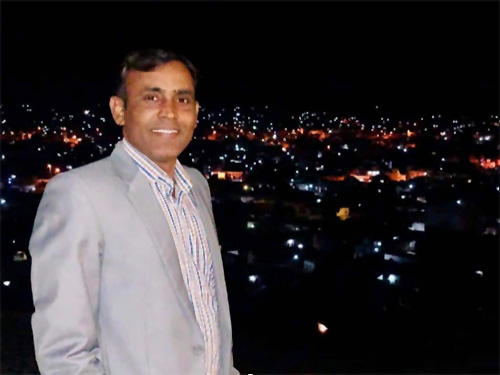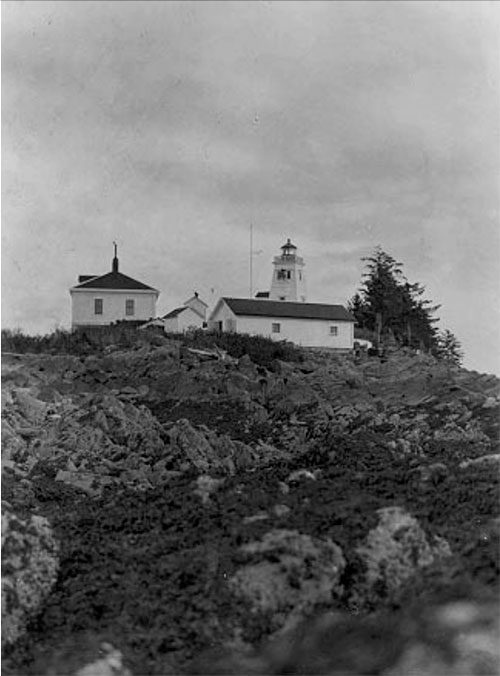






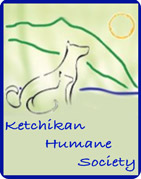


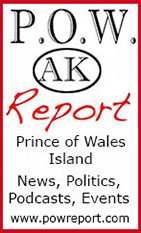

 Contact Contact 
 Webmail
Letters Webmail
Letters
 News Tips News Tips
 Copyright Info Copyright Info
 Archives Archives
Quick News
Search
 Alaska Alaska
 Ketchikan Ketchikan
 SE Alaska SE Alaska
Columns
- Articles
 Dave Kiffer Dave Kiffer
 Money Matters Money Matters
Historical
Ketchikan
 June Allen June Allen
 Dave
Kiffer Dave
Kiffer
 Louise
B. Harrington Louise
B. Harrington
Sports
 Ketchikan Links Ketchikan Links
Public Records
 FAA Accident Reports FAA Accident Reports
 NTSB
Accident Reports NTSB
Accident Reports
 Court Calendar Court Calendar
 Recent Filings & Case Dispositions Recent Filings & Case Dispositions
 Court Records Search Court Records Search
 Sex Offender Reg. Sex Offender Reg.
 Public Notices Public Notices
 Alaska Recall Alerts Alaska Recall Alerts
 Recalls.gov Recalls.gov
 AST Daily Dispatch AST Daily Dispatch
 KTN
Police Reports KTN
Police Reports
 Juneau Police Reports Juneau Police Reports
Weather,
Webcams
 Today's
Forecast Today's
Forecast
 KTN
Weather Data KTN
Weather Data
 AK
Weather Map AK
Weather Map
 AK Weathercams AK Weathercams
 AK Earthquakes AK Earthquakes

|
|

Monday
August 15, 2022
Watch The Congressional Candidate Forum August 01, 2022 - KINY - Click here
 COVID-19 DATA SUMMARY – August 3, 2022 COVID-19 DATA SUMMARY – August 3, 2022
Reporting data for July 27 - August 02, 2022
A total of 1,275 COVID-19 deaths have been documented among Alaska residents since the beginning of the pandemic.
OVERVIEW – 3,284 new cases - 0 newly reported deaths - 74 hospitalizations
SE Alaska Positive Cases:
Ketchikan 22, KGB 2, Juneau 102, Craig 4, Metlakatla 6, Haines 12, Petersburg 5, Sitka 39, Wrangell 11, POW-Hyder 8.
 COVID-19 DATA SUMMARY – July 27, 2022 COVID-19 DATA SUMMARY – July 27, 2022
Reporting data for July 20-26, 2022
STATEWIDE OVERVIEW: 2,946 new cases; 0 newly reported deaths ; 83 hospitalizations
SE ALASKA POSITIVE CASES: Ketchikan 25, Juneau 103, Metlakatla 5,
Craig 4, Haines 8, Petersburg 5, Sitka 44, POW-Hyder 5, Wrangell 7.
 COVID-19 DATA SUMMARY – July 20, 2022 COVID-19 DATA SUMMARY – July 20, 2022
Reporting data for July 13-19, 2022
STATEWIDE OVERVIEW: – 3,815 new cases - 0 newly reported deaths - 67 hospitalizations* (The hospitalizations total in the overview reflects last week's TH 13TH data. Due to a technical issue.)
SE ALASKA POSITIVE CASES: Ketchikan 21; KBG 1; Juneau 160; Craig 5; Metlakatla 10, Sitka 47; Skagway 3; POW-Hyder 10; Wrangell 19, Petersburg 3.
 COVID-19 DATA SUMMARY – July 13, 2022 COVID-19 DATA SUMMARY – July 13, 2022
Reporting data for July 6-12, 2022
OVERVIEW – 3,449 new cases - 24 newly reported deaths - 67 hospitalizations
SE ALASKA DEATHS:
A male resident of Ketchikan in his 60s; A male resident of POW-Hyder Census Area in his 70s; A female resident of POW-Hyder Census Area in her 40s; A male resident of Juneau age 80+;
SE ALASKA POSITIVE CASES:
Ketchikan 41; KGB 1; Metlakatla 5;
Juneau 128; Haines 9; Craig 1; Petersburg 7; POW_Hyder Census Area 5; Sitka 39; Skagway 6; Wrangell 46.
 COVID-19 DATA SUMMARY – July 6, 2022 COVID-19 DATA SUMMARY – July 6, 2022
Reporting data for June 29 - July 5, 2022
OVERVIEW: 3,323 new cases - 0 newly reported deaths - 56 hospitalizations
SE ALASKA POSITIVE CASES: Juneau 111, Ketchikan 50, KGB 1, Sitka 29, Wrangell 7, Craig 3, Haines 7, Metlakatla 3, Petersburg 3, POW- Hyder 3.
 Alert Levels Alert Levels
 Case Counts Dashboard Case Counts Dashboard
 Information Hub Information Hub
 Alaska: Statewide COVID-19 Alert Levels, Updates, Active Cases, Hospitalizations, etc. Alaska: Statewide COVID-19 Alert Levels, Updates, Active Cases, Hospitalizations, etc.
Ketchikan: Public Meetings
Ketchikan: Upcoming Events
Ketchikan: Announcements
Ketchikan: Classifieds
Historical
Ketchikan
 June Allen June Allen
 Dave
Kiffer Dave
Kiffer
 Louise
B. Harrington Louise
B. Harrington
Ketchikan Weather
 Ketchikan's
Forecast Ketchikan's
Forecast
 Ketchikan July Weather Ketchikan July Weather
 Ketchikan 2022 Daily & Monthly Data (Choose the Location of Interest) Ketchikan 2022 Daily & Monthly Data (Choose the Location of Interest)
 Nat Weather Service KTN Nat Weather Service KTN
 Ketchikan Tides & Currents Ketchikan Tides & Currents
 Tideschart Tideschart
 Sunrise - Sunset Ketchikan Sunrise - Sunset Ketchikan
Search the News
 Ketchikan Ketchikan
 Alaska Alaska
 SitNews Search SitNews Search
|
Southeast Alaska: Bringing the sockeye home; Klawock Indigenous Stewards and partners are restoring damaged salmon streams — and working to rebuild Klawock Lake’s once prolific sockeye salmon run By MARY CATHARINE MARTIN - In the early 1990s, when Quinn Aboudara was about 12, he and his father went hunting out a logging road that had just been punched into the old growth forest of Prince of Wales Island. Enormous spruce, hemlock and cedar trees towered all around them, their branches laden with pale green lichen. All around him, he knew, were deer, bears, birds, and berry bushes. The creeks were full of salmon. As they walked, his father stopped him. “Look around,” he said. “This is the last time you’ll ever see this forest.”
Thirty years after that hunting trip, Aboudara is part of the Klawock Indigenous Stewards Forest Partnership (KISFP). Recently, he and his crew were out on a logging road doing stream reconnaissance and mapping — and he realized he was standing on the same road he had walked with his father.
“I realized I’ll never see that area be old growth again,” he said. “My grandkids maybe will get to see something that was similar to what I saw. But it won’t be the same forest.”
“Our forests are resilient,” Aboudara continued. “But they have to be properly managed. And we cannot repeat the actions of previous generations. We can’t make the same mistakes.”
Restoring damaged creeks
On a recent day, the KISFP crew, as well as a forest partnership crew from Keex’ Kwáan Community Forest Partnership, the team at the Southeast Alaska Watershed Coalition (SAWC), and Alaska Youth Stewards, were out at Seven-Mile Creek, just a few hundred feet from where the stream flows into Klawock Lake. The area was clearcut in 1987. Enormous moss-covered trees as wide as a person is tall lay along the forest floor, left behind after logging. Moss-covered second growth rose into the air, spindly against the girth of massive stumps. And the restoration crew — some of whom are loggers, some of whom are new to the work, and some of whom, like Aboudara, regard their work not just as a full-time, year-round job but as a calling — were using capstan winches, ropes, pulleys, chainsaws and hard work to add logs and wood back into the stream.
“You can see the decline of all the fish populations through the years, how this (clearcut logging) affected it,” said crew member Jon Carle, who has worked at a mill, in tree thinning, in road-building for logging operations, and as a fisherman, and is now the Indigenous Stewards Coordinator with the Prince of Wales Tribal Conservation District. “These trees are forty years old. For forty years, fish didn’t really have any real cover or anything. It was just a clearcut. There was nothing left on the stream.”
After a clearcut, there’s an initial boom of berry bushes and other undergrowth-type plants. Then spruce and hemlock regrow all at the same height, locking out light and slowing growth. There is no food for deer or other animals, little to no shade for streams, and there are no branches or trees to fall into a stream, which helps create deep pools, rearing areas, and healthy habitat.
“If you go to a stream that’s in the old growth, there’s branches as big as some of the trees we’re trying to pull in here that have broken off and fallen in,” said Carle, who was working on the project as a supervisor and mentor attached to the Klawock partnership through the Organized Village of Kasaan. “The stream is just piled with big, large wood. And so we’re trying to replicate that.”
Fishing and the forest, Carle said, “all ties in. You’ve got to have the forest, so the fish can get up. Once one depletes, you see the other going. It all ties together.”
Sockeye salmon
In Klawock, people have seen that tie-in first-hand.
When he was younger, Carle remembers dipnetting for salmon right off the beach. For a month straight, he said, Klawock would smell of salmon as they spawned, washed downriver, and washed up on the beach. In the creeks, “the fish were going through so much you were able to come here and just snag them, or grab them with your hands.”
Back in 1868, the first salmon saltery and cannery in Alaska was built in Klawock Inlet. In the early 1900s, cannery records show a commercial harvest of 80,000 sockeye.
Last year, about 3,400 sockeye salmon made it up the river, Aboudara said.
Even in his lifetime, the Klawock Lake sockeye return has experienced a significant decline, Aboudara noted. “I remember being able to fish and in a single week we would have enough fish for my family, my community members, my friends, extended family. Nowadays you could go all season and not even have enough fish for your household,” he said.
The community worked together with scientists from Juneau to make a plan to help the fish. This project is one piece of the Klawock Lake Sockeye Salmon Action Plan, authored by the Southeast Alaska Watershed Coalition, the Nature Conservancy, and Kai Environmental Consulting Services, in consultation with tribal, Native corporation, government, non-profit, and private sector partners.
“The Indigenous people of Klawock are sockeye salmon people. And to have these kinds of declines, to have this kind of impact in my own lifetime, let alone the generation before, it’s detrimental. It hurts our spirit. We’re doing our (best) out here to help at least give the sockeye a bit more of a fighting chance so that future generations will know what it’s like to have these fish,” he said.
Steady jobs
There is another benefit, as well: doing restoration work, said Jon Carle, is a more regular, better paying job than most he has had.
“You’re in your own element, and you’re in your office, no matter where you are,” he said as he oversaw the placement of a tree. “The most rewarding part about this particular job is just seeing it all come together. This work keeps the same crew together, keeps everybody employed. Instead of trying to find a new crew, and trying to figure out everything every couple of months, it’s like clockwork.” - More....
Saturday - August 06, 2022
|
|
Alaska: Round 2 CARES Act Fisheries Relief Applications Now Available -
Applications for "Round 2" CARES Act relief for fishery participants are now available on the Pacific States Marine Fisheries Commission (PSMFC) web site. All applications must be submitted by mail through traditional methods, i.e., USPS, FedEx, UPS. The deadline for postmarking applications for all sectors is October 31, 2022. No late applications will be accepted.
Applications can be downloaded and printed from the link below. You are asked to carefully review Alaska's spend plan and application instructions before completing an application, link also below. Applicants are encouraged to download and print applications from the PSMFC web site and to pay for tracking and/or delivery confirmation when mailing the application to the PSMFC.
The PSMFC will NOT mail applications to fishery participants unless explicitly requested. If requesting an application by mail, email AKCares@psmfc.org, subject the message "Application Request," and provide your name, the address where you receive mail, and indicate which application(s) you are requesting.
If calling the toll-free hotline, provide the same information. You are also strongly encouraged that remote villages and communities request applications in bulk to be mailed to a community leader or tribal liaison. - More...
Saturday - August 06, 2022
Alaska: Outdoor Writer, Pro Staffer Ordered to Pay $15,000 in fines, lose hunting license for three years for illegal harvest of Musk Ox -
On July 28, 2022, outdoor writer Paul Dewitt Atkins, 56, agreed to a plea agreement for illegally harvesting a musk ox from Kotzebue on a subsistence permit. Atkins claimed Alaska residency when he was a resident of Oklahoma and he failed to destroy the trophy value of the animal in the field. Atkins has worked as pro staff for hunting and outdoor gear companies.
Atkins pleaded guilty to one count of failure to comply with hunt permit conditions, one count of false information, and one count of illegally transporting game, all misdemeanors. Atkins is ordered to pay $12,000 in fines and $3,000 in restitution with $23,000 in other fines suspended. Atkins' Alaska hunting license is revoked for three years, and he is on probation for three years. Atkins also forfeited 20 taxidermy items that were seized during the investigation.
A tier II subsistence permit is rare to get awarded as it’s a limited number of permits based on a point system that prioritizes rural Alaska residents.
Magistrate Pamela Smith in District Court in Nome accepted the three guilty pleas. “Mr. Atkins, I appreciate you taking responsibility for this. You are an experienced hunter and understand the consequences, I doubt I will be seeing you here again,” said Magistrate Smith. - More...
Saturday - August 08, 2022
|
|
Alaska: Alaska Deputy Attorney General's Opinion Provides Guidance to School Districts on Public Correspondence School Allotments and Private School Uses -
Alaska Deputy Attorney General Cori Mills released the Department of Law’s opinion on whether publicly funded correspondence schools can pay for services from private schools. The 19-page opinion found that public money may be spent for discrete materials and services from a private school when doing so supports a public correspondence education. But the Alaska Constitution does not permit public allotment funds to pay tuition for full-time enrollment.
Deputy Attorney General Mills released the opinion on July 25, 2022 to Acting Commissioner Heidi Teshner at the Department of Education and Early Development.
The opinion also clarifies that none of the recent U.S. Supreme Court cases on education funding (2022’s Carson ex rel. O.C. v. Makinand2020’s Espinoza v. Montana Department of Revenue) change the analysis because Alaska’s constitution does not distinguish on the basis of religion but rather on the basis of private vs. public. “This conclusion is not changed by the U.S. Supreme Court’s recent decisions interpreting the federal Free Exercise Clause; nor are those decisions likely to invalidate Alaska’s restriction on using public correspondence allotments only for nonsectarian services and materials,” Mills wrote.
The opinion provides guidance on the types of spending that are clearly constitutional, clearly unconstitutional, and those that fall into a gray area.
Mills met with reporters online today to discuss the State’s opinion.
"This was a difficult question - more difficult than I originally anticipated. Fortunately, the Law department has some great legal minds that assisted in thinking through these issues. I also had great help from the framers themselves as I read through the Alaska Constitutional Convention minutes,” said Deputy Attorney General Mills. “What became clear is that the framers wanted a strong public education system open to all children, and they gave the legislature a lot of flexibility in determining what that system looked like. That flexibility includes creation of a public correspondence allotment program that reimburses certain educational expenses for public school students enrolled in the program. So, then the balancing act is determining whether you are really supplanting a public education with a private one with the backing of public dollars. Under that balancing, we know what you can’t do is pay for a student’s tuition to attend full-time private school. That leaves a lot of options open for school districts to allow students to fulfill their public education requirements," said Deputy Attorney General Mills. - More...
Saturday - August 06, 2022
|
|
Ketchikan: First City Rotary & Ketchikan Wellness Coalition Partnering with State Department Program to Address Ketchikan Health Needs -
First City Rotary & The Ketchikan Wellness Coalition announced the arrival of Rajesh Kumar, from Pakistan, on August 6, 2022. Kumar is a participant in the Community Solutions Program sponsored and funded by the US State Department’s Bureau of Educational and Cultural Affairs Program which is implemented by IREX.
Kumar, will be working a four month long fellowship with the Ketchikan Wellness Coalition focusing his efforts in their many public health and wellness endeavors, and First City Rotary will serve as his cultural and community host.
He will be in Ketchikan until November 28th.
Kumar stated in his resume, “As an Assistant Commissioner for the Government of Sindh, I have experience resolving community issues of health, education, and other issues at the grassroots level. During my Community Solutions fellowship, I hope to learn leadership skills, innovative ideas, interpersonal and social skills, and coordination skills with different stakeholders. Upon returning to my home community, I plan to work on malnutrition and education by building teams, sensitizing and mobilizing the public, and coordinating effectively with stakeholders.”
With an interactive partnership with the Ketchikan Wellness Coalition, First City Rotary stated in a news release they look forward to welcoming Rajesh Kumar into our community in order to continue Rotary’s tradition of doing good things for Ketchikan and the world beyond.
Kumar holds a Master of Business Administration Degree from the University of Karachi, Pakistan; a Master of Arts Degree in Linguistics Shah Abdul Latif University, Khairpur, Pakistan; and a Master of Arts Degree in English Literature. - More...
Saturday - August 06, 2022 |
|
Ketchikan: Guard Island Heritage, Inc. Plans Fundraising Las Vegas Theme Dance Party at the Ted Ferry Civic Center By ROB HOLSTON - On The National Register of Historic Places.
Guard Island Lighthouse is located on a small island near the entrance to Tongass Narrows north of Ketchikan. The lighthouse location was prioritized 6th in a 1901 study of 15 Alaska proposed sites to assist shipping along Southeast Alaska's Inside Passage, one of the more difficult passages along the route of Klondike Gold Rush-related shipping to Juneau and to Skagway.
Guard Island Lighthouse, which opened in 1904, is placed on what is actually the larger of two islands, known since the 1880s as Guard Islands and given that name Guard, because of their prominent location of guarding the north west entrance to Tongass Narrows. The larger island is about 9 & 1/2 acres. At one time it also had two very grandiose homes, along with a boathouse and carpenter's shed.
On January 4, 1901, then U.S. President William McKinley issued an executive order reserving the islands for lighthouse purposes. Preparation for construction of the original lighthouse began in the fall of 1903. The U.S. Lighthouse Service crews completed the building and first lit the light on September 15, 1904. This lighthouse was a truncated, wooden pyramidal shaped structure that held the light 79 feet above mean tide. All the trees on the island were cut down to allow the light to be seen. This no doubt eliminated whatever eagles nests that were on the island ant that time. No record can be found as to whether the trees were willed on site to construct the first light tower or if they were cut up for fire wood or simply discarded. Trees are still occasionally cut back to allow the light to be seen as Guard Island Lighthouse remains an active aide to navigation.
The original wooden structure did not hold up well in the area’s severe climate. In 1922 construction began on what we see before us today, a solid concrete structure, that from this vantage point looks a lot more like a miniature white house rather than a lighthouse.
The first light keeper was John O. Karlson and his assistant was Guss Hall. They lived in a story and a half framed house that can be seen in our black and white photos as the smaller of the two island homes. Besides maintaining the light, they had a fog signal apparatus, considered unusual at the time, also to maintain. It struck a bell every 20 seconds. That sounds like some sort of torture treatment to me. During the early 30’s a second dwelling was built. It was a two and a half story home thus allowing two families to share the islands and have enough additional room to host light keepers in training.
Guard Island was an official light keepers training station for a number of years. In 1938, radio telephones and radio beacon monitoring systems were installed. By 1949 a radio beacon synchronized with the fog signal devise warned mariners in determining their distance from Guard Island. Modern vessels, equipped with radar and GPS now make such antiquated distance signaling devices obsolete. - More...
Saturday - August 06, 2022
|
PETER ROFF: REFORM AT THE FTC IS LONG OVERDUE - The U.S. economy is teetering on the edge of a recession. Prices are up. Job creation appears to be slowing. People are seeing the value of their wages decline. It’s a perilous time, yet instead of seeking ways to stimulate economic growth, policymakers in Washington are poised to enact new rules that will take us where we don’t want to go.
We’ve already seen it in the energy sector. President Joe Biden’s initiatives to make renewables the main source of the nation’s power have ravaged the energy sector. Instead of incentivizing domestic producers to ramp up and produce more oil and natural gas to bring prices down, he’s gone hat in hand to the Saudis to ask them to pump more oil. He’s also ordered the release of a million barrels a day from America’s critical petroleum reserves – intended for use only in national emergencies like war and natural disasters – to lower the price. - More...
Saturday - August 06, 2022
JOE GUZZARDI: PROPOSED ICE ID CARD DOCUMENTS THE ‘UNDOCUMENTED’ - President Biden’s eagerness to welcome millions of global illegal migrants is unlimited. Not only are people from every corner of the world welcome to come to and settle in the United States at taxpayer expense, but now Biden wants to issue each migrant official government identification cards.
With quasi-official status available, mostly poor, unskilled, non-English speaking illegal immigrants will be more willing than ever to pay criminal cartel smugglers for their dangerous and often deadly northbound journeys. - More...
Saturday - August 06, 2022
 |
MONEY MATTERS: IS NOW THE TIME TO BUY CYBERCURRENCY? By MARY LYNNE DAHL , Certified Financial Planner ™
Retired - When the stock market goes down, many investors recognize an opportunity to invest at lower share prices. If you are an investor with some cash on hand, you could be buying shares for your long-term goals now, given that prices of many shares are down. If you are, in fact, a long-term investor, getting shares now, at lower prices is just smart. If you buy good quality shares, you are simply getting them “on sale”, at bargain prices. When you buy shares during a market decline, you need to wait before selling them, sometimes years. Careful, long-term investors are willing to wait, and it usually pays off. It is a proven, time-tested strategy.
Most people have heard the old investing advice to “buy low, sell high”. The advice is based on the fact that if you buy shares at $10 each and sell them later at $15 each, you will make a profit of $5 per share, which is a return of 50% on that investment. This is not hard to do if you buy when the market in general is down, usually because of economic decline, market correction or a crash in share prices. Buying during a down market is a great idea when and if you have the cash to buy these shares. - More...
Saturday - August 06, 2022
TAYLOR KOVAR: Ask Taylor: Economics of Climate Change By Taylor J Kovar, CFP®- Hi Taylor - I read an article headline about the economics of climate change and it piqued my interest. Naturally, I wanted to get the thoughts of my favorite economics guy. What do you think?
Hey Mindy - You’re too kind. There’s a very real connection between climate, energy, and economics. It’s unfortunate that the conversation turns political so quickly because it should be an easy topic to discuss without getting into the weeds of policy debate.
- More...
Saturday - August 06, 2022
FINANCIAL FOCUS: 529 plans: Underused but valuable Provided By BEN EDWARDS, AAMS®- In just a few weeks, students will be heading off to college – and parents will be getting out their checkbooks. Without a college-bound student in your home right now, you might not be thinking much about tuition and other higher education expenses, but if you have young children, these costs may eventually be of concern – so how should you prepare for them?
It’s never too soon to start saving and investing. Unfortunately, many people think that they have a lot of “catching up” to do. In fact, nearly half of Americans say they don’t feel like they’re saving enough to cover future education expenses, according to a 2022 survey conducted by financial services firm Edward Jones with Morning Consult, a global research company. - More...
Saturday - August 06, 2022
|
POLITICAL CARTOONS

Political Cartoon: IRS Gets More Weapons
by Dick Wright©2022, PoliticalCartoons.com
Distributed to subscribers for publication by CagleCartoons.com
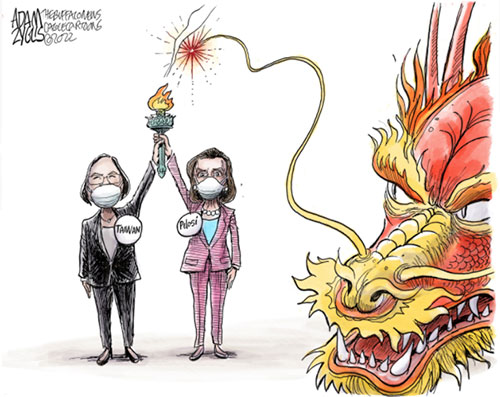
Political Cartoon: Pelosi in Taiwan
by Adam Zyglis©2022, The Buffalo News, NY
Distributed to subscribers for publication by CagleCartoons.com
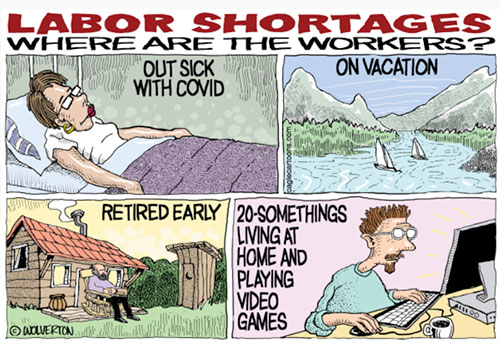
Political Cartoon: Labor Shortages
by Monte Wolverton©2022, Battle Ground, WA
Distributed to subscribers for publication by CagleCartoons.com

Political Cartoon: Inflation Spending
by Rick McKee©2022, CagleCartoons.com
Distributed to subscribers for publication by CagleCartoons.com
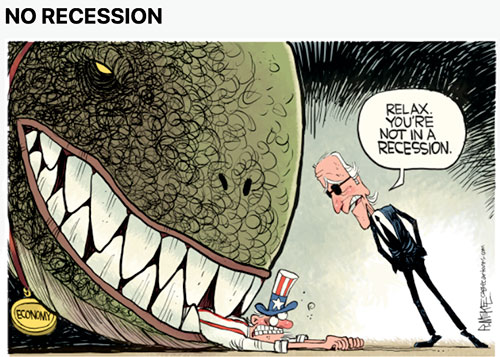
Political Cartoon: No Recession
by Rick McKee, CagleCartoons.com
Distributed to subscribers for publication by CagleCartoons.com
|
 |
Ketchikan Gateway Borough Assembly 2022 Candidate By Austin Otos - I’ve had the honor to serve on the Ketchikan Gateway Borough Assembly for three years starting in 2019. Since being elected, local government has undergone tumultuous changes starting with COVID, transitioning to having no cruise passengers, and ending with the community coming back into somewhat normalcy. I would characterize my short three-year term on the Borough Assembly as the “COVID Years”. Starting in 2020, the KGB declared a state of emergency and a two-year recovery process began. During those few years of economic recovery, the KGB was able to recuperate its loses from various federal and state government dollars such as the CARES Act, which helped restore tax revenue lost from an abysmal cruise ship year. With these funds, we were able to inject millions of dollars into the community into programs such as: rental/mortgage relief, daycare assistance, supplemental food programs, and local business grants. During the pandemic, both local governments worked together to provide services with minimum redundancy, which maximized the programs efficiencies. Without these crucial programs, the community would’ve had compounded social and economic problems.
- More...
Saturday - July 30, 2022
 |
Our Ancestors Survived Against All Odds, We Owe It to Them to Vote By Deb Haaland - Many people don’t know that Native Americans didn’t have the right to vote in federal elections until we were granted U.S. citizenship in 1924 and that it wasn’t until the 1960s that the last state granted us the right to vote in state elections. This is the sad and ironic truth — even though Indigenous communities in North America are some of the oldest democracies in the world. Participating in governing is a time honored and sacred tradition in our Indigenous communities. Our ancestors and relatives survived against seemingly insurmountable odds, which is why we owe it to them to make our voices heard at the ballot box.
This is why I became an organizer in the first place. I knew that generations of laws restricting the right to vote for Native people impacted our participation in elections, and that it would take a concerted effort to register voters; ensure they had the information about voting dates, locations and hours; and personal outreach to increase voter participation.
With my voting rights champion, WWII veteran Miguel Trujillo in my mind, I would lace up my sneakers, drive out to remote communities in New Mexico, and go door to door. I can’t count how many times I knocked on someone’s door and heard that it was the first time anyone had ever reached out to them to register to vote. Since my organizing days in the early 2000s, we’ve made strides to increase the Native vote. But as we fast forward to today, we face the same battles.
Recent attempts such as closing certain polling locations, limiting early voting, changing polling location hours, and even drawing maps to hush the voices of specific populations are consistent attempts to restrict voting access. - More...
Saturday - July 30, 2022
FIRE ALL CURRENT CITY COUNCIL MEMBERS AS THEY COME UP FOR RE-ELECTION By David G Hanger
- That includes the mayor whose recent article parodying vehicle choices was also pretty dopey in its comments about the bad roads around here and the tanks you need to drive on them. Visiting sister Kathy in Montana a few weeks back I watched a fellow named Thor disassemble and completely re-build the front end of my nephew’s big pickup truck. That took two days of hard work and would surely cost several thousands to do in K-town. I hear there is a lot of that kind of work in town; the car repair folks cannot keep up.
Consider the fact that a city like Anchorage has hundreds of roads and streets to maintain, cities like Seattle, San Francisco, or Los Angeles thousands, and what we are asking locally is for this bunch of clowns to figure out how to pave the incredibly bad sections of one road.
Awash in funny money for two years and more, and all we hear is about raises for bureaucrats and raises for city council members; no concern whatsoever about the wrecked infrastructure for which they are responsible that is costing locals untold tens of thousands of dollars in unneeded vehicle repair costs. - More...
Saturday - July 30, 2022
Email your opinions and letters for publication to editor@sitnews.us
|
Articles &
photographs that appear in SitNews may be protected by copyright
and may not be reprinted or redistributed without written permission
from and payment of required fees to the proper sources.
E-mail your news &
photos to editor@sitnews.us
Photographers choosing to submit photographs for publication to SitNews are in doing so, granting their permission for publication and for archiving. SitNews does not sell photographs. All requests for purchasing a photograph will be emailed to the photographer.
|
|











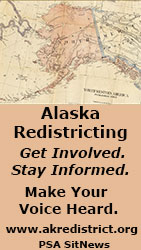
|
|
![]() Contact
Contact ![]()
![]() Webmail
Letters
Webmail
Letters![]()
![]() News Tips
News Tips![]()
![]() Copyright Info
Copyright Info![]() Archives
Archives![]() Alaska
Alaska![]() Ketchikan
Ketchikan![]() SE Alaska
SE Alaska![]() Dave Kiffer
Dave Kiffer![]() Money Matters
Money Matters ![]() June Allen
June Allen![]() Dave
Kiffer
Dave
Kiffer![]() Louise
B. Harrington
Louise
B. Harrington ![]() Ketchikan Links
Ketchikan Links![]() FAA Accident Reports
FAA Accident Reports ![]() NTSB
Accident Reports
NTSB
Accident Reports![]() Court Calendar
Court Calendar![]() Recent Filings & Case Dispositions
Recent Filings & Case Dispositions ![]() Court Records Search
Court Records Search![]() Sex Offender Reg.
Sex Offender Reg.![]() Public Notices
Public Notices![]() Alaska Recall Alerts
Alaska Recall Alerts![]() Recalls.gov
Recalls.gov![]() AST Daily Dispatch
AST Daily Dispatch![]() KTN
Police Reports
KTN
Police Reports![]() Juneau Police Reports
Juneau Police Reports ![]() Today's
Forecast
Today's
Forecast![]() KTN
Weather Data
KTN
Weather Data![]() AK
Weather Map
AK
Weather Map![]() AK Weathercams
AK Weathercams![]() AK Earthquakes
AK Earthquakes















